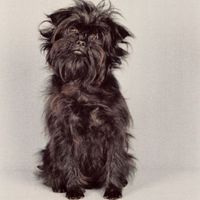
Bucovina Shepherd Dog / Bucovina Sheepdog, Bucovina Shepherd

Breed history:
It is a Romanian breed that evolved naturally in the Carpathians, in Bucovina, in the NE of Romania. It seems to be related to dogs such as : Karakachan, Tornjak or Hrvatski Planinski Pas, which it resembles. Some say that these dogs were used by the Dacians and Romans in Dacia and Moesia to guard flocks and to hunt. After careful selections and selective crossbreedings, the breed was improved and the Bucovina Shepherd Dog of today was obtained. It is very appreciated and used for watching and protecting properties.
Description:
It is a large-sized, strong, robust, imposing dog. The body is massive and sturdy, rectangular, long rather than tall, with strong bones. It is not a heavy dog. The head is strong, massive, sturdy, with a conical, well-developed muzzle, equal in length to the skull, which is slightly rounded. It has a moderate stop. The eyes are small compared to the head, almond-shaped and slanting, dark, with highly pigmented eyelids. The ears are V-shaped, placed slightly higher than the headline, round-ended and drooping. They are not cropped. The neck is thick and strong. The tail is bushy, covered with long and thick hair. It is set high, when at rest it is carried low, with a slightly bent tip, reaching the hock; when alert it is carried high, sickle-shaped and sometimes over the backline. The fur is double-layered, with a short, thick and lighter inner layer and a straight, rough and thick outer layer. The hair is shorter on the head and on the front side of the legs and longer on the rest of the body. The hair on the neck is thicker, forming a mane. On the back sides of the legs the fur forms fringes. The most common combination of colours is white with well-defined patches (black or sand- coloured). There can also be striped white specimens. Some of the dogs are pure white or black, but are not much in demand.
Personality:
It is an intelligent, jolly, active and independent dog. It is brave, proud, well-balanced, calm, with a very well-developed guarding instinct. It is friendly and devoted to its master and family, but suspicious of strangers. It shows great courage in front of potential predators (wolves, bears, lynx). It barks loudly if other animals or strangers get close to its territory. Its bark has a low tone and can be heard at long distances.
Grooming:
Its fur needs brushing from time to time not to get tangled.
Living conditions:
It is resistant to weather changes. It feels best in a fenced yard, in a large space, because it is rather playful and has an independent character. It needs training and socialization.
Training:
It is not hard to train because it is intelligent and eager to please its master. Beautiful results can be achieved with a gentle and consistent training. The master should not forget its independent side.
Usefulness:
It is an excellent watchdog for herds and houses. At night it patrols the property it guards. It is a good companion in the mountains and a good companion dog, enjoying playing with children.


Austrian Shorthaired Pinscher
Austrian Pinscher, Osterreichischer Kurzhaarpinscher, Österreichischer, Österreichischer Pinscher




